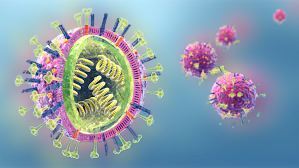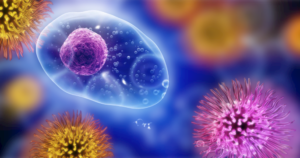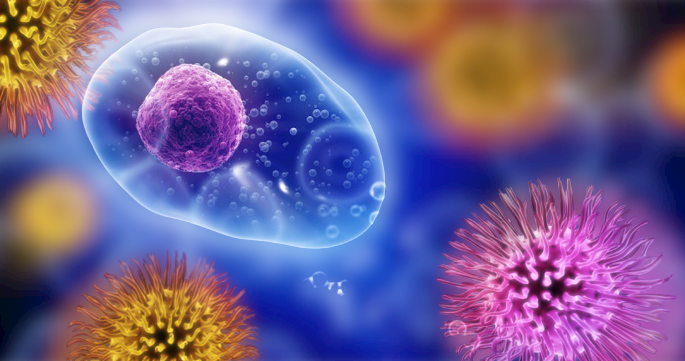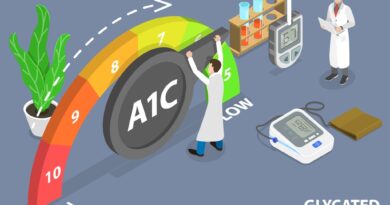How long are you contagious with human metapneumovirus
How long are you contagious with human metapneumovirus

advertisement
Introduction
Human Metapneumovirus (HMPV) is a common respiratory virus that affects people of all ages. It belongs to the Paramyxoviridae family and was first discovered in 2001. HMPV is known to cause respiratory tract infections, ranging from mild cold-like symptoms to severe respiratory illnesses. One important aspect to consider when dealing with HMPV is the contagious period. In this article, we will explore how long a person can remain contagious with human metapneumovirus and discuss various aspects related to its transmission, symptoms, diagnosis, treatment, prevention, and recovery.
What is Human Metapneumovirus?

advertisement
Human Metapneumovirus (HMPV) is a viral infection that affects the respiratory system. It was first discovered in 2001 and belongs to the Paramyxoviridae family. HMPV is a common cause of respiratory tract infections in people of all ages, from infants to older adults. It shares similarities with other respiratory viruses like respiratory syncytial virus (RSV) and influenza.
HMPV is highly contagious and can spread easily from person to person through respiratory droplets. When an infected person coughs, sneezes, or talks, tiny droplets containing the virus are released into the air. These droplets can be inhaled by others, leading to infection. The virus can also spread by touching surfaces or objects contaminated with the virus and then touching the face, particularly the nose, mouth, or eyes.
The symptoms of HMPV infection are similar to those of other respiratory illnesses. Common symptoms include coughing, sneezing, runny or stuffy nose, sore throat, fever, headache, fatigue, shortness of breath, and wheezing. In severe cases, particularly among vulnerable populations such as older adults, young children, or individuals with weakened immune systems, HMPV can lead to more serious respiratory conditions like bronchitis or pneumonia.
Diagnosing HMPV infection typically involves analyzing respiratory samples, such as nasal or throat swabs, for the presence of the virus. Healthcare professionals may also consider the individual’s symptoms and medical history. Currently, there is no specific antiviral treatment for HMPV. Treatment mainly focuses on relieving symptoms and supporting the patient’s recovery. This may include rest, staying hydrated, using over-the-counter pain relievers, and using a humidifier to ease breathing.
Preventing the spread of HMPV involves practicing good respiratory hygiene and taking appropriate precautions. Regularly washing hands with soap and water for at least 20 seconds, or using hand sanitizers with at least 60% alcohol when soap and water are not available, can help reduce the risk of infection. It is important to cover the mouth and nose with a tissue or elbow when coughing or sneezing, and to dispose of tissues properly. Additionally, cleaning and disinfecting frequently touched surfaces and objects can help prevent the spread of the virus. Avoiding close contact with individuals who are sick and staying home when feeling unwell, especially with respiratory symptoms, is also crucial in preventing the transmission of HMPV.
Most individuals recover from HMPV infection within 1-2 weeks with proper rest and care. It’s important to note that being infected with HMPV does not provide lifelong immunity, and reinfection is possible. However, subsequent infections tend to be milder due to the development of partial immunity against the virus.
In conclusion, Human Metapneumovirus (HMPV) is a contagious respiratory virus that can cause a range of respiratory symptoms. It spreads through respiratory droplets and can lead to mild to severe respiratory illnesses. Practicing good respiratory hygiene, taking necessary precautions, and seeking medical attention when needed can help manage HMPV infections effectively.
Contagious Period of Human Metapneumovirus
The contagious period of human metapneumovirus varies from person to person and depends on several factors, including the individual’s immune response and the severity of the infection. Generally, a person infected with HMPV can be contagious from a few days before symptoms appear and up to 5-7 days after becoming sick. In some cases, the contagious period may extend beyond a week, especially in individuals with weakened immune systems or underlying health conditions.
Transmission of Human Metapneumovirus
Human Metapneumovirus is primarily transmitted through respiratory droplets generated by infected individuals. When an infected person coughs, sneezes, or talks, tiny droplets containing the virus can be released into the air. These droplets can be inhaled by others, leading to infection. The virus can also spread by touching surfaces or objects contaminated with the virus and then touching the face, particularly the nose, mouth, or eyes.
Symptoms of Human Metapneumovirus
The symptoms of human metapneumovirus infection are similar to those of other respiratory illnesses. Common symptoms include:
- Coughing
- Sneezing
- Runny or stuffy nose
- Sore throat
- Fever
- Headache
- Fatigue
- Shortness of breath
- Wheezing
In severe cases, particularly among older adults, young children, or individuals with weakened immune systems, HMPV can lead to more serious respiratory conditions such as bronchitis or pneumonia.

advertisement
Diagnosis and Treatment
Diagnosing human metapneumovirus infection often involves analyzing respiratory samples, such as nasal or throat swabs, for the presence of the virus. Additionally, healthcare professionals may consider the individual’s symptoms and medical history. Currently, no specific antiviral treatment exists for HMPV infections. Treatment mainly focuses on relieving symptoms and supporting the patient’s recovery. This may include rest, staying hydrated, using over-the-counter pain relievers, and using a humidifier to ease breathing.
Prevention and Control
Preventing the spread of human metapneumovirus involves practicing good respiratory hygiene and taking appropriate precautions. Here are some measures that can help reduce the risk of infection:
- Wash hands frequently with soap and water for at least 20 seconds.
- Use hand sanitizers containing at least 60% alcohol if soap and water are not available.
- Cover your mouth and nose with a tissue or your elbow when coughing or sneezing.
- Dispose of tissues properly and wash hands afterward.
- Clean and disinfect frequently touched surfaces and objects.
- Avoid close contact with individuals who are sick.
- Stay home when feeling unwell, especially with respiratory symptoms.
Recovery and Immunity
The recovery time from human metapneumovirus infection varies depending on the severity of the illness and the individual’s overall health. Most individuals recover within 1-2 weeks with proper rest and care. It’s worth noting that being infected with HMPV does not provide lifelong immunity, and reinfection is possible. However, subsequent infections tend to be milder due to the development of partial immunity against the virus.
FAQs
- Can human metapneumovirus be transmitted through objects?
- While it’s possible for the virus to spread through contaminated surfaces, direct person-to-person transmission is the primary mode of infection.
- Is human metapneumovirus more dangerous for certain age groups?
- Yes, human metapneumovirus can pose a higher risk for infants, older adults, and individuals with weakened immune systems.
- Are there any vaccines available for human metapneumovirus?
- Currently, there is no licensed vaccine specifically targeting human metapneumovirus. Research is ongoing in this area.
- Can I get infected with human metapneumovirus more than once?
- Yes, reinfection is possible, but subsequent infections are generally milder due to partial immunity developed from previous exposures.
- What should I do if I suspect I have human metapneumovirus?
- If you experience symptoms consistent with HMPV infection, it is recommended to consult a healthcare professional for diagnosis and guidance on treatment options.
Conclusion
Human metapneumovirus is a contagious respiratory virus that can cause a range of respiratory symptoms, from mild to severe. The contagious period for HMPV typically lasts for a few days before symptoms appear and up to 5-7 days after becoming sick. Preventing the spread of the virus involves practicing good respiratory hygiene, such as frequent handwashing and covering coughs and sneezes. While there is no specific antiviral treatment for HMPV, supportive care can help alleviate symptoms. Stay informed, take necessary precautions, and seek medical attention if needed to manage human metapneumovirus infections effectively.







Pingback: How Long Does Human Metapneumovirus Last? - AFitHelp
Pingback: Will Drinking Water Reduce Protein in Urine? - AFitHelp
Pingback: How serious is human metapneumovirus - AFitHelp